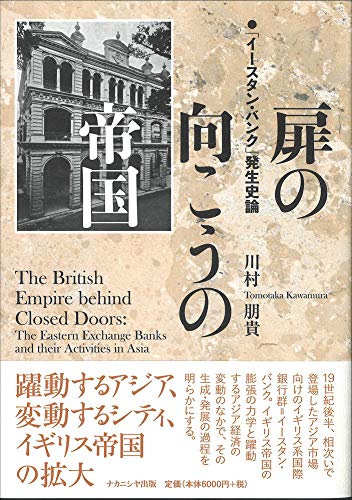5 0 0 0 扉の向こうの帝国 : 「イースタン・バンク」発生史論
- 著者
- 川村 朋貴
- 出版者
- 京都大學人文科學研究所
- 雑誌
- 人文学報 = Journal of humanities (ISSN:04490274)
- 巻号頁・発行日
- no.110, pp.253-283, 2017
本稿が対象とする「イースタン・バンク」とは, 19世紀半ばのロンドン, インド, 香港において設立されたアジア市場向けのイギリス系株式銀行群のことで, これまでも, そして現在でも, 多くの歴史家の関心の的となっているイギリス国際銀行群の一類型である。イースタン・バンクは, 1880年代以降, 植民地内部の商品流通や産業金融へ関与するようになったとはいえ, 為替取引を主体とする国際的商品流通部門の割合が極めて高かったという特徴から「東洋為替銀行」と呼ばれていた。本稿の目的は, イースタン・バンクの立地場所やそこでの営業実態を解明し, それが南アジアとその周辺地域経済圏の形成に果たした役割と影響を論及することである。具体的には, 史資料の残存状況が比較的良好なマーカンタイル銀行を事例として取り上げる。マーカンタイル銀行は, アジア各地でおもに対外貿易の金融を行なっていたが, 1870年代後半からの銀価格の下落による大きな為替差損を経験した。それへの対応策の一つが, インドや東南アジアでの割引・貸付業務の強化という「関所」ビジネスの多様化であった。こうした国際的商品流通部面以外での銀行業務は, 植民地内部とその後背地の商品流通と生産過程への関与を意味し, イギリスの植民地支配体制の形成と確立を背景にして, 非ヨーロッパ商人・金融業者との日常的な取引関係につながったのである。ここでの強調点は, イースタン・バンクの植民地金融ネットワークとアジア系有力商人の金融ネットワークとの相互の関わりというのが, 「独占」を属性とする「関所資本主義」の世界で成立したということである。本稿では, 「関所資本主義」という概念を援用しながら, イースタン・バンクの存在と「ヨーロッパとアジア」の出会いのあり方を再解釈し, イギリス国際銀行史研究の新境地を開拓する。This paper aims to provide historical knowledge on the pattern of development of South Asian regional economy in the late nineteenth century, with special reference of the British Eastern exchange banks including the Chartered Mercantile Bank of India, London, and China. And it also offers the ways in which they came to play a vital role in a rapid growth and formation of "Gateway capitalism" in South Asia under the impact of British imperial administration. The paper attempts to suggest a new perspective of the exchange banks for the understanding of British multinational banks. From the late 1850s onwards, South Asia became included in the networks of the British Eastern exchange banks. After the opening of the Suez Canal, these banks in Asia rapidly increased their activities and began to play a key role, both in the expansion of international trade between Europe and Asia and in the rapidly growing intra-regional Asian trade. The well-established patterns of trade in that period were reflected by the geographical distribution of their offices in London and larger port-cities of Asia known as so-called "Gateways". This paper explores the business of the Chartered Mercantile Bank in Bombay, Calcutta, Rangoon, and Penang, mainly on the basis of the bank's relevant records held at the HSBC's Group Archives, and contemporary sources that include important information of its key activities.
